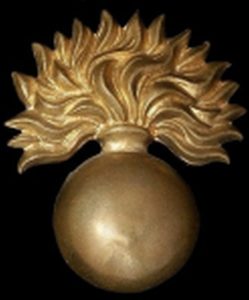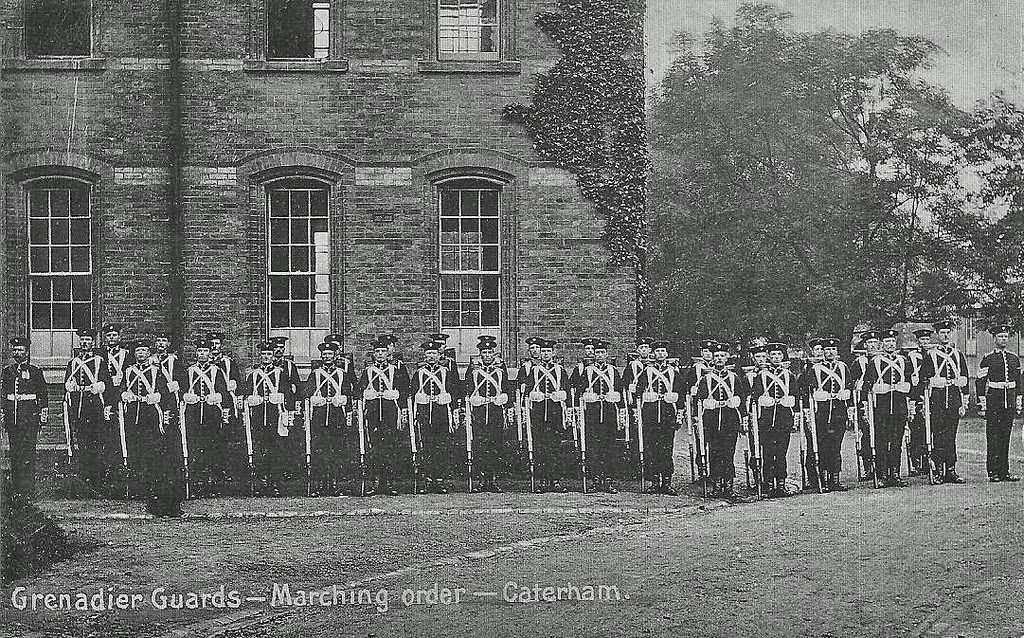Arthur Blincow [4308]
1889-1948
Father Nm: Thomas [158] born 1851 Long Buckby died before 1911.
Mother Nm: [3142] born c 1853 Tettenhall Staffs- died Jan1936 • Burton upon Trent, Staffordshire, England
Marriage Dt: Oct 1916 • Burton, Staffordshire, United Kingdom
K comments:  WW1 Brother Joseph served with the 4th Bn. Coldstream Guards.
WW1 Brother Joseph served with the 4th Bn. Coldstream Guards.
WW2. Son Arthur Douglas served with the Derbyshire Yeomanry and then the Royal Armoured Corps. Nephew Joseph Leonard was a skilled munitions maker.
Spouse comments: Ann Kersey 1884-1968. BIRTH 19 OCT 1884 • Burton-Upon-Trent, Staffordshire, England. DEATH APR 1968 • Burton upon Trent, Staffordshire, England
Children: Arthur Douglas Blincow [2553] born 22.6.1918 died Jun Q 1996 East Staffs
Birth 1889
Burton upon Trent, Staffordshire, Volume: 6b, Page: 413.
1890 Census 7 Morris Cottages Hornington Staffs
Living with widowed mother
- Annie Blincow 37
- James Blincow 13
- Joseph Blincow 12
- Mary Blincow 9
- Jane Blincow 7
- Arthur Blincow 1
1901 Census 32 Heath Rd Stapenhill, Burton upon Trent
living with widowed mother
- Anne Blincow 48
- Joseph Blincow 22
- Jane Blincow 17
- Arthur J Blincow 24
- Arthur Blincow 11
1908
- 28th Nov. Enlisted with Grenadier Guards. Likely served until 1914 on either a 6 year or 12 years term of service.
- Grenadier Guard duties in this period were guarding the Royal Palaces and in 1910 was the guard for the Coronation of George V.
WW1
Blincow Arthur, 1889, Burton, Private, 14093, 1st Grenadier Guards
Note: Arthur served in the same Battalion as Sergeant Major Joe Wallace Blincow from 1911 onwards. It is highly likely they knew each other, but most likely didn’t know they were 3rd cousins both descendants from GG Grandparents Joseph Blencowe 1784-1839 and Elizabeth Dawson of Long Buckby.
1914
- Aug. Stationed at Warley Barracks, London District.

- Sept. Came under command of 20th Brigade, 7th Division.
- 7th Oct. Arthur landed at Zeebrugge on 7th October and just 12 days later was involved in a mighty battle for the strategic town of Ypres
- 19th Oct. – 22nd Nov. Arthur was with the Guards as part of the 7th Division in the First Battle of Ypres, a battle in which the battalions (including his own) stopped the German advance at the strategic Belgian town of Ypres.

Fellow Sergeant Major – Parkin, 1st Battalion, Grenadier Guards, on the Ypres-Menin road near reformatory, October 1914. part of “PILKINGTON CHRISTOPHER (SERGEANT) COLLECTION” (photographs) Made by: Pilkington, Christopher (Sergeant) (Photographer) 1914-10 Ypres was the last major obstacle to the German advance on key ports of Boulogne-sur-Mer and Calais. In this battle, the 1st G. Gds. were devastated at Kruiseecke as the German got in behind their lines. Arthur was one of only 200 men and 4 Officers to survive the 1st Ypres campaign. The Battalion was so affected that along with the rest of the 7th Division it was not back to full strength until the spring of 1915.
- 29th Oct.

Ghevult. The 7th Div. shown in the centre of the German attack At Gheluvelt, Belgium the 1st G. Gds. suffered such casualties that it had no officers left and only 80 men one of which must have been Arthur. Four days later, after reinforcement, it had once more been reduced to no officers and only 120 men. The Battalion was so affected that along with the rest of the 7th Division it was back to full strength until the spring of 1915. The 1st G. Gds. suffered heavily throughout the War but early on this was one of its most devastating losses in the month of October it suffered 147 deaths. 1,3.
1915
- 11th-14th Mar. Neuve Chapelle. This battle was a British offensive in the Artois region of France and broke through at Neuve-Chapelle but the success could not be exploited.

The specific positions of the Guards Division on the 26th with the 1st G. Gds. just East of Loos. Map source Grenadier Guards 1914-18 Ponsonby. 11th-12th. Mar. 1st G.Gds moved forward into old British trenches and then progressed from there but ran into murderous German machine-gun fire, they dug in and were pinned down subsequently bombarded for several days.2 Casualties were heavy 57 men killed between the 10th-14th Mar. 29 men were killed on the 10th in the initial attack.3
- May. In billets at Robecq.2
- Jun.
- On the 5th the Battalion went into billets at Hingette, and on the 8th moved to Robecq, thence to Essars, where it remained until it relieved the Border Regiment in the trenches on the 14th June.2
- 15th Jun. An attack was made by the Seventh Division over some flat ground between two rises at Givenchy.2 The Bn. lost 12 killed in this attack, with 4 more recorded killed the next two days.3
- On the 19th the Battalion was relieved by the Royal Welsh Fusiliers and went into the reserve trenches in front of Gorre, and on the 21st into
billets at Les Choqueaux. On the 24th it returned to the trenches between Givenchy and La Bassee Canal, and on the 27th was relieved by the Border Regiment, and went into billets at Le Preol.2
- Jul. The Battalion had a good rest and remained in billets till the 17th of July when it relieved the Yorkshire Regiment in the trenches at Quinque Rue.2
- 4th Aug. Arthur’s battalion was transferred to a newly formed all Guards Division and the 1st Bn. was part of the 3rd Guards Brigade, Guards Division.
- 25th Sept.- 13th Oct. Battle of Loos.The largest battle of WW1 and ultimately a very heavy defeat. General Haig mistakenly thought this would be a great victory (even one to end the war) but without the planning, adequate Artillery fire and specific target maps of advancement. Haig thought the first use of the gas by the British would devastate the Germans but it did not. The British had 60,000 casualties compared to the Germans 26,000 which in itself tells of the outcome. The BEF commander Gen. Sir John French lost his command as a result of the failure of the battle and Haig inherited the role from then on.5

British positions on the night of 25th 
The specific positions of the Guards Division on the 26th with the 1st G. Gds. just East of Loos. Map source Grenadier Guards 1914-18 Ponsonby. - 27th Sept. Loos area: At around 4.00 pm, the 3rd Guards Brigade is caught by a heavy artillery barrage while moving in a column of fours along the Vermelles-Loos road near the original front line trenches. They were on their way to attack Hill 70 through Loos. Many casualties were incurred although deaths were only 7 between 27th-29th.3
- 25th Dec. The Guards Division took part in a Christmas truce with the German Army, much frowned upon by Command this was ended as soon as it started. This took place at trenches near Laventie.
1916
- Jan-Feb. The beginning of 1916 found the 1st G. Gds. in Brigade Reserve at La Gorgue, where it had retired after a strenuous time in the trenches, and where it settled down to steady drill and instruction in bombing.2
- On the 12th it moved to Laventie, and from there went into the trenches at Picantin every 48 hrs. The same routine was followed until 16th February when the whole Guards Division was sent to the coast for some sea air.2
- Mar.
- On 5th March the Battalion marched to Poperinghe, where it was again put under canvas. The Guards Division now went into the Ypres salient, and there it remained for several months, either in the trenches or in billets in the neighbourhood.2
- 20th Mar.Bn.went into the trenches at Ypres (map ref.I.12.a to I.12.C,)
with the Canadians on the right and the Welsh Guards on the left. Two companies were placed in the front line, with one in support and one in reserve. They immediately came in for a very heavy shelling and had 6 killed and 14 wounded, mostly in the King’s Company.2
- Apr. Trenches east of Potidje.2
- May. Spells in trenches at Rifleman Farm.2
- Jun. The Battalion remained in billets at Poperinghe or Kiekenput until the 18th, when it moved up into the trench line near Irish Farm. On the 27th the Battalion retired into dug-outs in Canal Bank and Yperlee, where it remained until the end of the month.2
- Jul. Trenches in spells until the 27th when it left the Ypres salient. The Bn. entrained at Poperinghe for Bouezeele, whence it marched to Watten. There it remained until the 29th when it proceeded to Bavingchove
went by train to Fervent. On the 30th it marched to Halloy.2 - Aug. During August the 1st Battalion only had two days in the trenches at Beaumont-Hamel, when the King’s Company had rather an unpleasant time with the enemy’s trench mortars and had nine casualties.2
- 30th Sept. Arthur had become ill most likely from the trench conditions or the use of gas in combat. He was honourably discharged on this date unable to serve anymore.
Sources
- Grenadier Guards War diary.
- Grenadier Guards in ww1 Vol 1
- Commonwealth War Graves Commission.
- Maps from The Grenadier Guards in the Great War 1914-1918 Frederick Ponsonby.
- Loos 1915 by Nick Lloyd.
Medals
 Arthur was awarded the 1914 ‘Mons” Star with Clasp and Rosette, the Victory and British medals plus the Silver War Badge.
Arthur was awarded the 1914 ‘Mons” Star with Clasp and Rosette, the Victory and British medals plus the Silver War Badge.
 Arthur claimed the rosette on the ribbon bar but the 1914 medal was not.
Arthur claimed the rosette on the ribbon bar but the 1914 medal was not.
His medal card confirms his battalion to be the 1st Grenadier Guards who entered the conflict in Belgium on 6th Oct 1914.
After the War
Died in 1927 at Burton upon Trent age 50 years
Burton upon Trent, Staffordshire, Volume: 6b, Page: 324.
Gallery
There are 4 records in the National Archives for this man. For copyright reasons, they cannot be re-published.








